Visitors from all over the world flock to the Western Cape every year to see the beautiful spectacle of wild flowers that bloom along the west coast and adjacent inland areas after the spring rains. We can emulate this a little by planting African Daisy seeds in our gardens elsewhere in the country. So, this one is cheating a little for, although they are indigenous to this country, they are not strictly speaking found growing in the wild in the Eastern Cape:
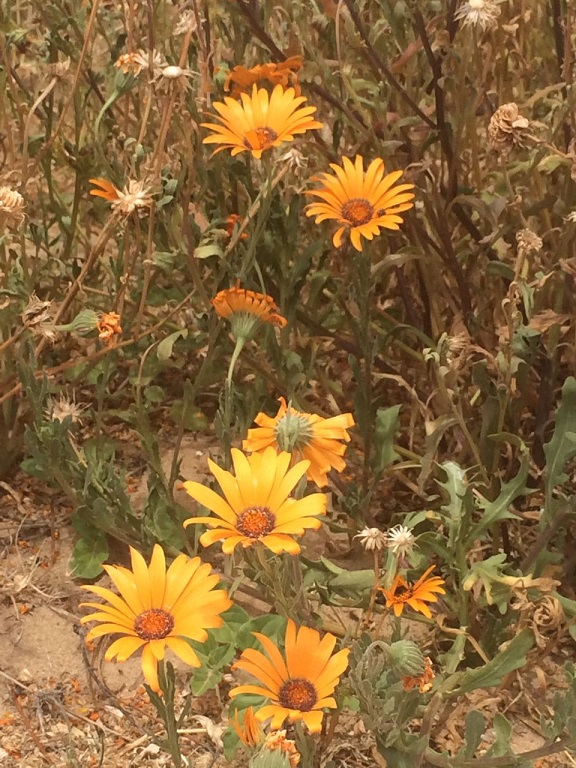 I have specially chosen this view of them – their beauty is evident – to illustrate these lovely plants in different stages, from the attractive flower heads to the dried seeds (see top right in the photograph) and the bare remains where the paper thin seeds have already been blown away in the wind.
I have specially chosen this view of them – their beauty is evident – to illustrate these lovely plants in different stages, from the attractive flower heads to the dried seeds (see top right in the photograph) and the bare remains where the paper thin seeds have already been blown away in the wind.
Several of our wild flowers are bulbs – one might miss the plants until they flower – yet they are generally worth looking out for, like this Gladiolus dalenii:
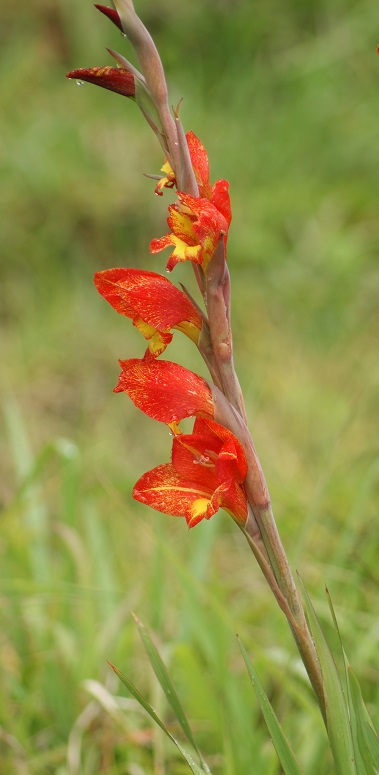 The Giant Candelabra Lily is always a pleasure to see too:
The Giant Candelabra Lily is always a pleasure to see too:
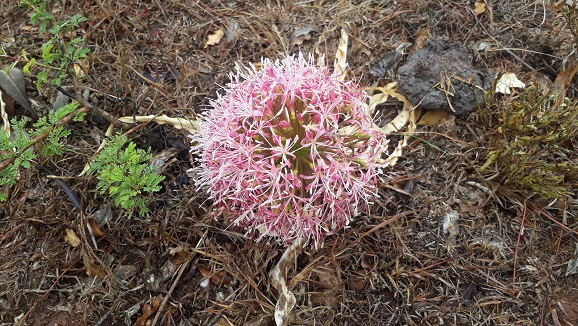 There are so many aloes in bloom now. This Aloe ferox in my garden provides an enormous amount of pleasure in its own right, as well as in terms of the birds it attracts:
There are so many aloes in bloom now. This Aloe ferox in my garden provides an enormous amount of pleasure in its own right, as well as in terms of the birds it attracts:
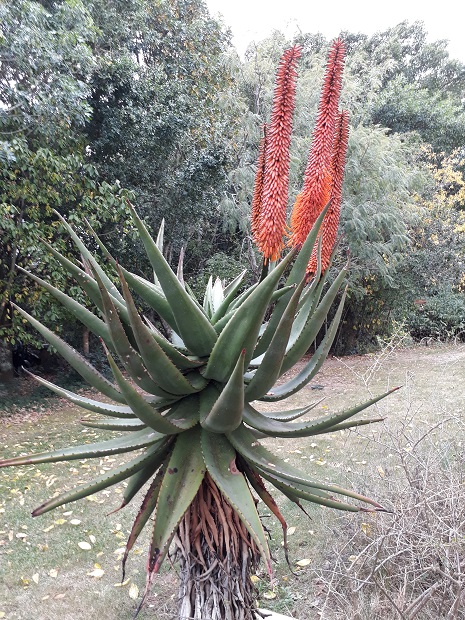 Then there are some colourful indigenous trees, such as the Cape Chestnut:
Then there are some colourful indigenous trees, such as the Cape Chestnut:
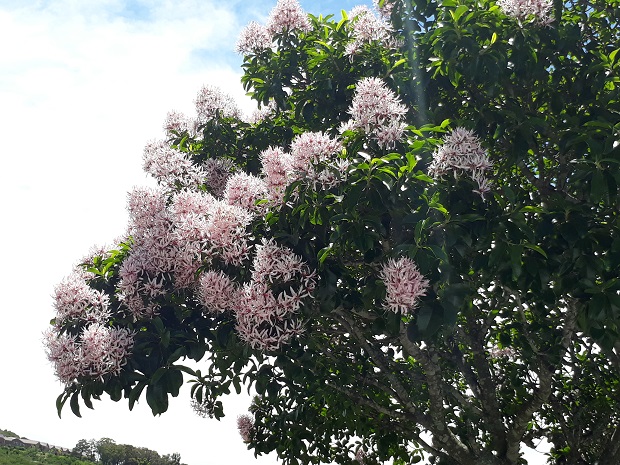 Many of these have been planted as street trees in our town and I have a beautiful specimen in our garden. Indigenous trees that self-seed themselves so easy here are the Pompon trees:
Many of these have been planted as street trees in our town and I have a beautiful specimen in our garden. Indigenous trees that self-seed themselves so easy here are the Pompon trees:
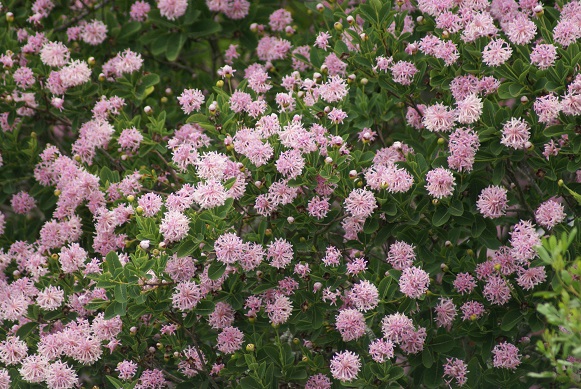 Soon the scarlet Erythrinas will be blooming; the pale pink flowers of the Crassula ovata are beginning to make a show; the yellow Canary Creeper flowers are still vying with the burnt orange of the Cape Honeysuckle; and blue Plumbago blossoms are peeping out here and there.
Soon the scarlet Erythrinas will be blooming; the pale pink flowers of the Crassula ovata are beginning to make a show; the yellow Canary Creeper flowers are still vying with the burnt orange of the Cape Honeysuckle; and blue Plumbago blossoms are peeping out here and there.

Beautiful flowers, Anne. We can never resist adding more to our gardens! 🙂
LikeLike
You are right!
LikeLike
Such a lovely selection! I still can’t imagine all that colour and greenery in winter 😊
LikeLike
Typically, the grass will turn straw coloured or brown as the winter progresses; many trees are evergreen, while others simply lose their leaves. We tend to get snow only in the higher parts of the country – none where I live.
LikeLiked by 1 person
Love those pink pompoms!
LikeLike
We started off with only two pompon trees in our garden; they seed themselves so easily that we have quite a forest of them in our garden. It is a wonderful sight when they are all in bloom.
LikeLiked by 1 person
A very fine selection.
LikeLike
Thank you. I am pleased you like them.
LikeLiked by 1 person
My mother always loved the Cape’s wildflowers, such a lovely memory … unfortunately she didn’t see them in the last few years because we moved to Australia.
LikeLike
There are a lot of things I would miss in the natural environment should I leave the country for good. The wild flowers of the Cape are especially beautiful.
LikeLiked by 1 person
Indeed!
LikeLike
Very pretty – I wish our seasons for flowers was longer … the Summer speeds by so it seems we just get the garden colorful and the Fall arrives.
LikeLike
I am pleased I do not live in an area where it snows.
LikeLiked by 1 person
I would be ecstatic to never lay eyes on snow again.
LikeLike
It’s amazing to me that such wonderful flowers grow wild in your country. It makes ours seem paltry in comparison.
LikeLike
Not paltry at all! It is a matter of overlooking the richness of the diversity we have; this is something I am trying to appreciate more by learning the names of as many of our wild flowers as I can 🙂 🙂
LikeLiked by 1 person
Such a fine collection
LikeLike
Thank you, Derrick 🙂
LikeLiked by 1 person
Those are some spectacular blooms!
LikeLike
I am pleased you like them 🙂
LikeLiked by 1 person